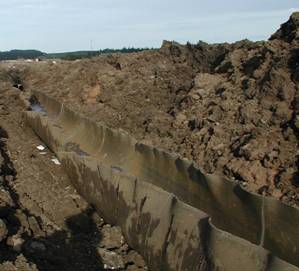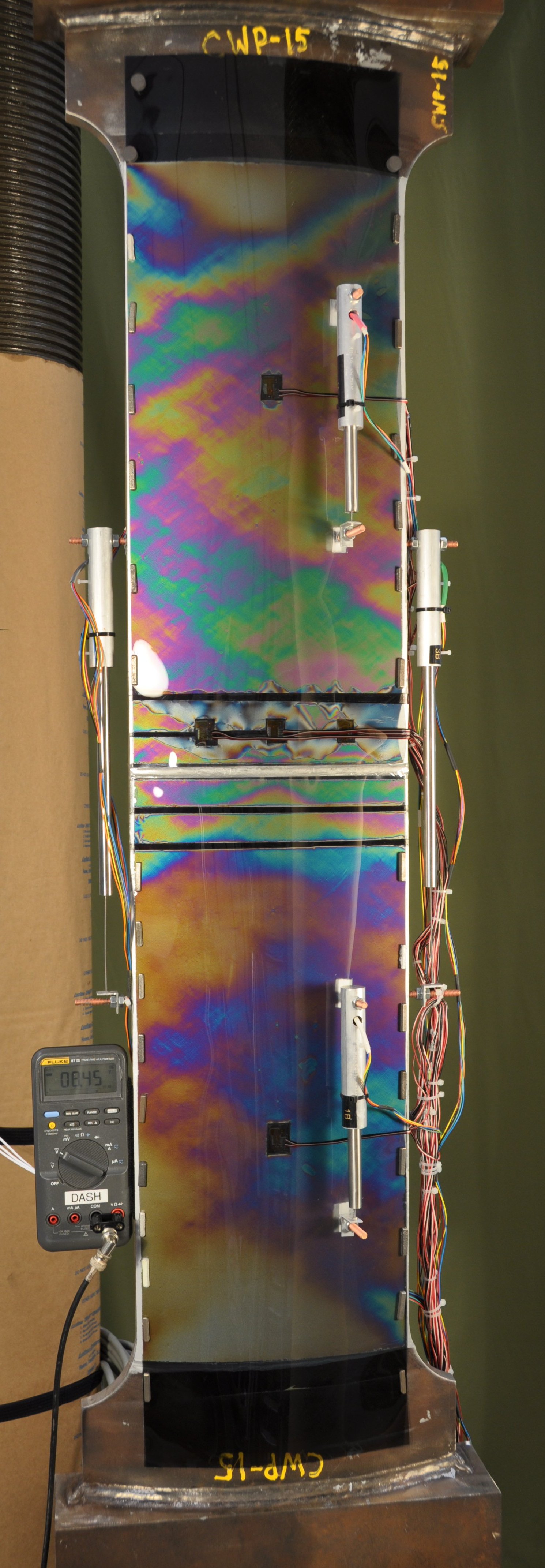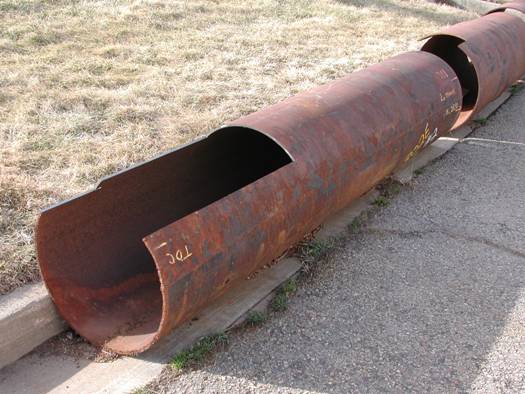| * |
|
Pipeline Safety
Summary:Our goal is to provide standard test methods and critical data to the pipeline industry to improve safety and reliability. Of particular interest is the testing of high-strength pipeline steels, which could enable higher volume gas transport and reduce energy costs. However, characterizing the ductile fracture properties of these materials is difficult, limiting their use due to safety concerns. We are developing new methods to test these materials to enable pipeline designers to better predict fracture dynamics and make better informed material selections.
Running crack in a buried pipeline. Description:Large scale curved-wide plate tests (approximately 2 m long and 0.3 m wide) on full-thickness, X100 girth welded pipeline specimens have been performed to determine the effects of temperature and flaw geometry on the resistance to fracture of base metal, weld metal and the HAZ. The curved-wide plate specimen is sectioned from linepipe in the longitudinal direction. These large-scale tests are performed in the laboratory on a 4.5MN load frame that closely approximates the flaw constraint conditions found in-service. A method of fatigue pre-cracking these large curved-wide plates was a significant challenge for this program. The method was successfully developed and optimized so that the testing could be conducted at temperatures as low as -60 ˚C. The results of this ongoing program are being evaluated by the DOT and industry partners. In addition to providing data for fracture mechanics models for use with in-service pipeline, this research is being used to develop and qualify welding process parameters with industrial partners.
Photoelastic mounted on a CWP specimen loaded to 3.7 MN
We are adapting the Crack Tip Opening Angle (CTOA) method to testing pipeline steels. CTOA is becoming one of the more widely accepted properties for characterizing fully plastic fracture, especially for running ductile cracks in pipes. It can be measured directly from the crack opening profile and can be related to the geometry of the fracturing pipe. In cases where there is a large degree of stable-tearing crack extension during fracture, CTOA can measure fracture resistance. Our research focuses on improving the optical imaging technique for determining the opening angle.
Specimen configuration for the CTOA test. In addition to CTOA test development, we also measure the fatigue properties of different pipeline steels at full thickness to provide data on predicted pipeline performance. Specimens are machined directly from the pipeline longitudinal axis. To date, the fatigue behavior of six pipeline steels have been investigated. (Left) Fatigue test of pipeline section and (right) aged pipe sample. |
Start Date:October 1, 2004End Date:OngoingLead Organizational Unit:mmlFacilities/Tools Used:Related Programs and Projects:Associated Products:Project Summary (PDF) Contact
Dash Weeks |





